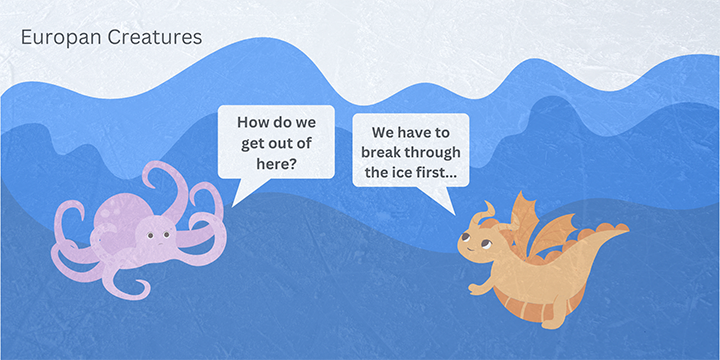New Images of Europa
NASA’s spacecraft Juno provided new images of Jupiter’s icy moon. Juno has been orbiting Jupiter since 2016.
Providing the Goods
Juno captures images by performing flybys and snapping images. This spacecraft was as close as 219 miles above Europa’s surface. Once the images were captured, twelve hours later four new images of Europa were on Earth.
These are the first images of Jupiter’s icy moon since January 2000. The previous NASA missions by spacecraft Voyager and Galileo had provided past images of Europa. Voyager flew through the Jovian system in 1979. Galileo orbited Jupiter from 1995 to 2003. However, no big changes or new discoveries have happened yet.
What Lies Beneath
Instead, the new clearer images provide further evidence of what scientists at NASA have previously discussed. Europa quite possibly has an ocean flowing below its surface. The new images show cracks and stresses in the icy surface of Europa. This would indicate the rising and lowering tides below the surface. The water below is most likely causing the stresses in the ice.
Liquid water being discovered on Europa was huge news. If a moon has water, it automatically becomes a candidate for potential life. Europa is a promising candidate for a new life in our solar system, we just need to see what is below its icy surface.
The images serve another purpose as well. Scientists at NASA are planning a new mission: Europa Clipper. Europa Clipper is set to launch in 2024. The spacecraft will make repeated close flybys to Europa, specifically. NASA hopes these flybys will be able to discover more of what is below Europa’s surface.
Not Done Yet
NASA’s Juno spacecraft launched in 2011. Juno made its arrival on Jupiter in 2016 and made repeated dives beneath the clouds of Jupiter. This revealed that there is lightning high in Jupiter’s atmosphere. The probe also discovered that it rains ammonia in the form of what scientists have called baseball-sized “mushballs.”
Juno completed its probing of Jupiter last year and received a mission extension. Juno would orbit Jupiter 42 more times and fly by three of Jupiter’s moons; Ganymede, Europa, and Io. The flybys at Ganymede were completed in June 2021, and Io is next now that Europa’s flybys have also been completed.
A friendly face, a lover of basketball, wanna-be Head coach, future sports journalist: Jonathon Carmona. Currently attending Rio Hondo Community College,...


